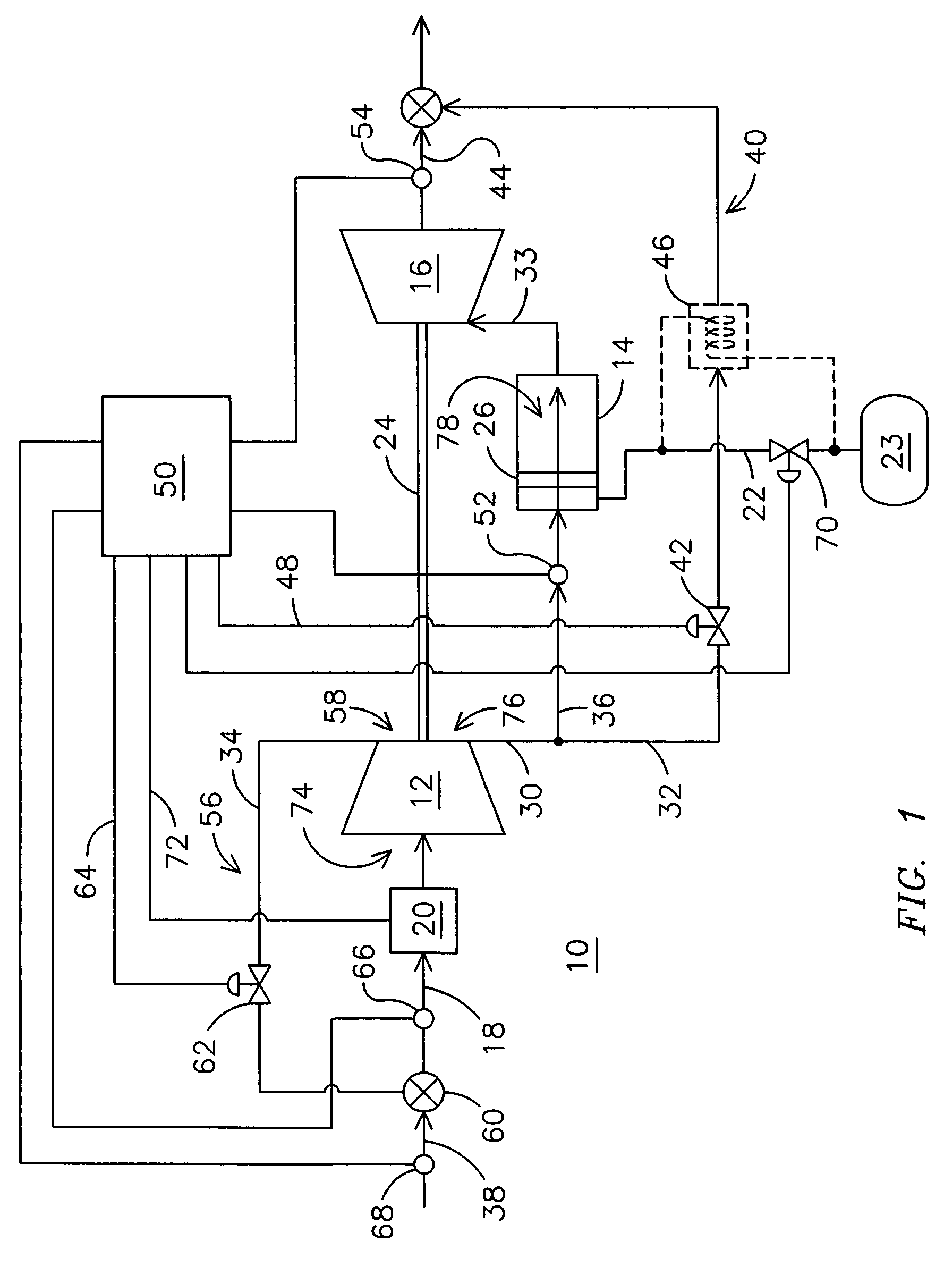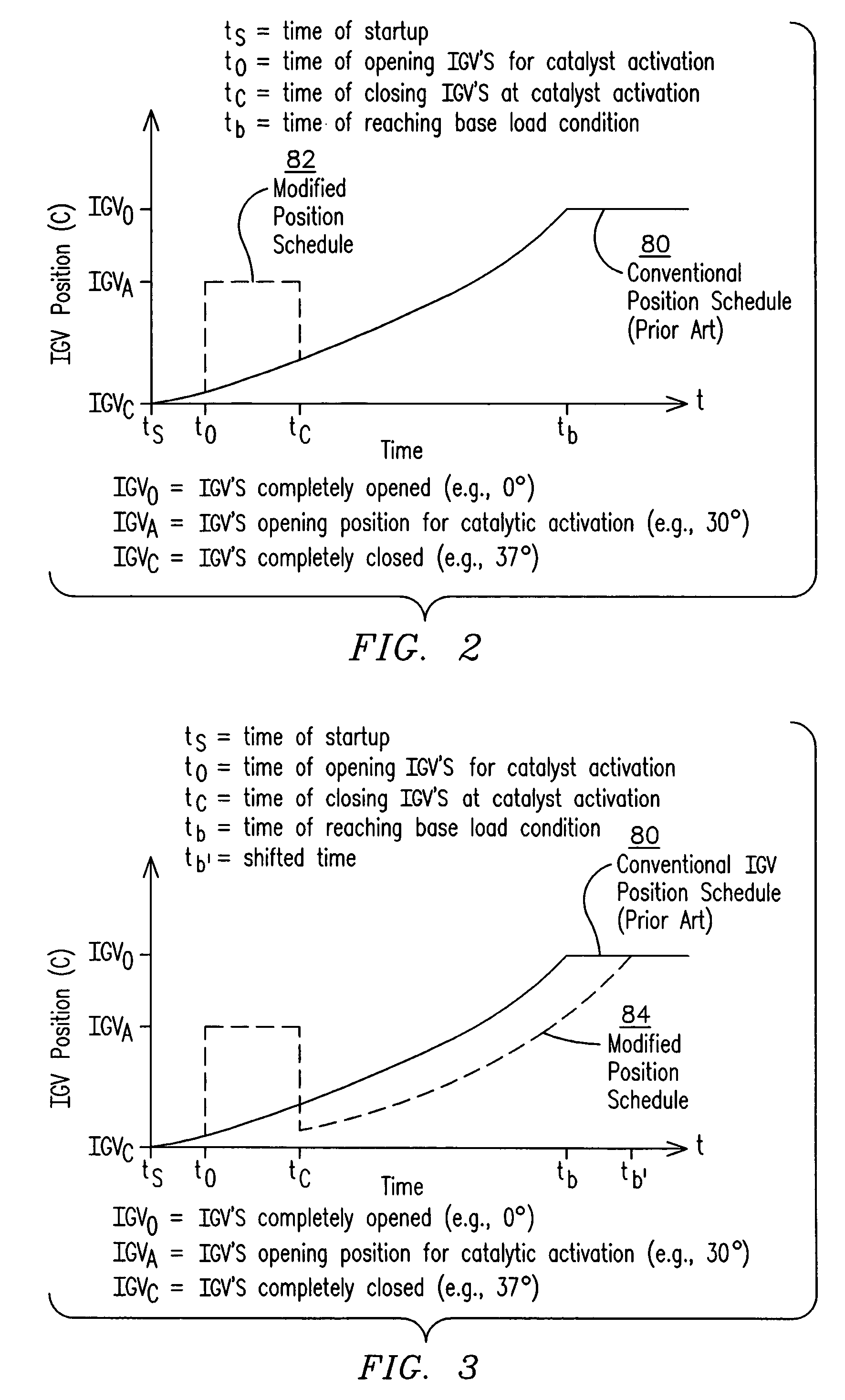Control of gas turbine for catalyst activation
a technology of catalyst activation and gas turbine, which is applied in the ignition of turbine/propulsion engine, engine starter, lighting and heating apparatus, etc., can solve the problems of pilot alone being unable to sustain stable combustion, producing undesired nox emissions, and being typically piloted
- Summary
- Abstract
- Description
- Claims
- Application Information
AI Technical Summary
Benefits of technology
Problems solved by technology
Method used
Image
Examples
Embodiment Construction
[0008]FIG. 1 is a functional diagram of a catalytic gas turbine 10. Major components of the gas turbine 10 include a compressor 12, a catalytic combustor 14, including a catalyst 26, and a turbine 16. The gas turbine 10 receives inlet air 18 through a set of inlet guide vanes 20. The inlet air 18 is compressed by compressor 12 and delivered to combustor 14, where it is used to combust a flow of fuel 22 from a fuel source 23 to produce hot combustion gas 33. The hot combustion gas 33 is delivered to turbine 16 where it is expanded to develop shaft power. Typically, the turbine 16 and compressor 12 are connected to a common shaft 24. The aforementioned components of the gas turbine 10 are fairly typical of those found in the prior art, and other known variations of these components and related components may be used in other embodiments of the present invention.
[0009]In a typical catalytic gas turbine startup procedure, the catalyst 26 remains inactive until the temperature of the air...
PUM
 Login to View More
Login to View More Abstract
Description
Claims
Application Information
 Login to View More
Login to View More - R&D
- Intellectual Property
- Life Sciences
- Materials
- Tech Scout
- Unparalleled Data Quality
- Higher Quality Content
- 60% Fewer Hallucinations
Browse by: Latest US Patents, China's latest patents, Technical Efficacy Thesaurus, Application Domain, Technology Topic, Popular Technical Reports.
© 2025 PatSnap. All rights reserved.Legal|Privacy policy|Modern Slavery Act Transparency Statement|Sitemap|About US| Contact US: help@patsnap.com



